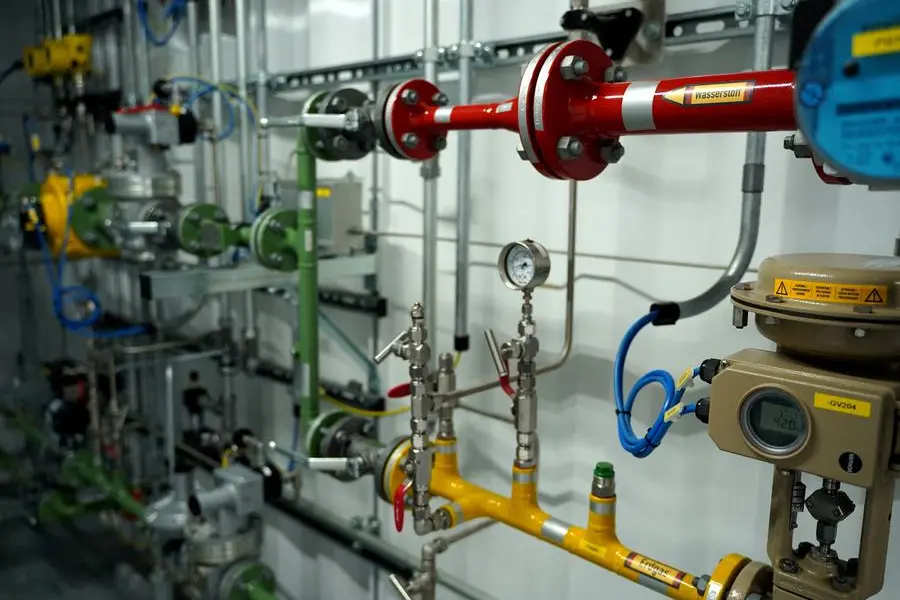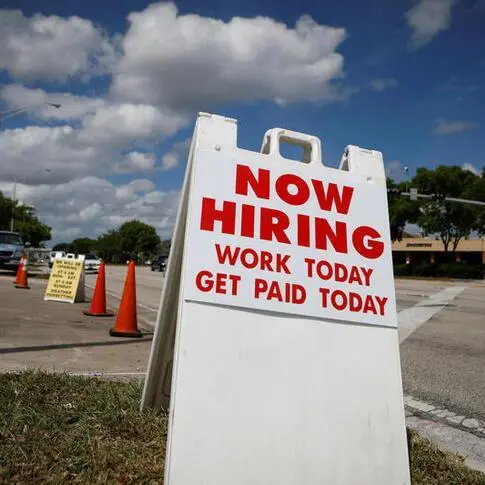PHOTO
The Biden administration's climate agenda is facing an unexpected challenge in drought-prone Corpus Christi, Texas, where a proposed clean hydrogen hub would require the installation of energy-intensive, expensive and potentially environmentally damaging seawater desalination plants.
The Gulf Coast port is in the running for up to $1 billion available under President Joe Biden's 2021 Infrastructure Investment and Jobs Act to create a regional hub to produce hydrogen, a low-emissions fuel made by electrolyzing water that can help decarbonize heavy-emitting industries and transportation.
A hydrogen hub would require access to millions of gallons of water – a challenge in Corpus Christi which is experiencing a multi-year drought. While local officials say they can provide that water by constructing a seawater desalination plant, environmental groups and some local residents and lawmakers are lining up to oppose desalination sites.
"It makes no sense to create a purported clean energy source that in turn destroys an entire ecosystem, threatens other economies reliant upon a healthy bay system, and usurps the water supply for residents," the Coastal Alliance to Protect the Environment, a Corpus Christi activist group, wrote in a letter to U.S. Energy Secretary Jennifer Granholm, shared with Reuters.
Reuters interviewed six researchers who study hydrogen as green power and had exclusive access to an analysis by Rystad Energy consultancy that showed that the Biden administration's vision of low-carbon hydrogen may run into a challenge that is itself exacerbated by climate change: water scarcity.
Producing hydrogen requires enormous amounts of fresh water in a world increasingly affected by climate-driven drought.
Nine of the 33 projects on the Department of Energy shortlist for the hydrogen hubs are in highly water-stressed regions, according to Rystad data.
Those locations include Southern California, Colorado, Kansas and New Mexico as well as Texas. Globally, the picture is even worse, with more than 70% of proposed green hydrogen projects located in water-stressed regions like the Middle East.
"Most of the world's planned green hydrogen projects are to be located in water-stressed regions," said Minh Khoi Le, renewable energy analyst at Rystad, adding that this would create demand for more desalination plants.
The Biden administration is offering companies up to $100 billion in tax credits and regions up to $7 billion in grants to build out hydrogen hubs to help reach a target of producing 50 million metric tons of clean hydrogen fuel by 2050.
The DOE will announce the hubs in September.
The DOE declined to comment on the Corpus Christi or other hydrogen hub applications, but pointed Reuters to the agency's funding announcement, which "acknowledges that water consumption for H2Hubs could place additional stress on regional water resources."
The U.S. Environmental Protection Agency's Assistant Administrator for Water Radhika Fox told Reuters that "more water systems are considering desalination as source water becomes scarcer and treatment technology improves" but did not comment directly about Corpus Christi.
Peter Zanoni, the city manager for Corpus Christi, said the hydrogen project, if approved, all but requires the adoption of seawater desalination.
Even with around 100 million gallons of groundwater supply per day, the city is experiencing drought conditions and limiting the use of sprinklers and irrigation to once a week, according to its drought contingency plan.
The city is contracted to supply up to 25 million gallons of water per day to major industrial users ExxonMobil and Saudi Arabia's Basic Industries Corporation, Zanoni said, and anticipates hosting at least a half dozen green hydrogen producers at the hub, each which would need around 3 to 4 million gallons of fresh water per day.
He said the city plans to add at least 70 million gallons of water per day of capacity, including at least 30 million from the proposed seawater desalination plant. "That drought-proof source is really appealing to us," Zanoni said.
WATER WARS
While the United States has hundreds of desalination plants scattered across the country to treat mildly brackish inland sources of water, transforming ultra-salty ocean water into fresh water carries higher risk, some water experts say.
Pumping the briny byproduct of desalination into Corpus Christi Bay could cost the fishing industry around $6 million per year by killing off seafood species like shrimp and Atlantic croaker, according to Texas A&M University-Corpus Christi's Paul Montagna, an endowed chair at the Harte Research Institute for Gulf of Mexico Studies.
And seawater desalination plants are energy intensive and expensive to build and maintain, energy experts say. The Poseidon plant near San Diego, California - the largest seawater desalination plant in the Western Hemisphere - cost over $1 billion to build and requires nearly $275 million in upgrades to meet updated state rules to protect marine life that can get sucked into the intake pipes or are affected by the briny discharge from the plant.
In March, the EPA stepped in with a $170 million loan to offset the price spikes for local consumers.
Corpus Christi first proposed seawater desalination in 2017 to supply its rapidly growing energy and petrochemicals industries.
The city has struggled to secure federal environmental permits and local support.
The EPA in January said it will not recognize a state-issued pollutant discharge permit for one of the proposed desalination plants on Harbor Island until Texas regulators conduct a more thorough environmental impact review of groundwater use and conservation efforts.
In a letter to the Texas Commission on Environmental Quality in September, the EPA said it "continues to have concerns regarding reporting and monitoring requirements for total dissolved solids, chlorides, and sulfates."
In October, a local residents' association from the Hillcrest neighborhood, a majority black area that is already home to refineries, filed a Civil Rights Act complaint saying the proposed Inner Harbor desalination plant would worsen pollution.
The city is seeking regulatory approval for three other desalination sites.
Errol Summerlin, founder of local environmental group CAPE, said the environmental costs of seawater desalination were too high, even if it is in support of a low-carbon fuel.
"This plan would destroy an ecosystem to create an unproven solution to the world's climate crisis," he told Reuters.
Brandon Marks, a regional campaigner for the Texas Campaign for the Environment, said heavy industrial users, not residents, have the most to gain from the proposed desalination plants.
A report released in November by consultancy Autocase Economic Advisory said that over the last decade, nearly 70% of the increase in water use in the Corpus Christi area came from industrial users compared to just under 6% from households, commercial uses, fire protection, public recreation, and sanitation.
"The whole reason they are pursuing this water is to enable unfettered growth, which would not only harm the bay but harm communities of the bay area," Marks said.
Charles Zahn, chairman of the Port of Corpus Christi and a major proponent of desalination, said desalination plants could be a boon for the region, even offering the opportunity to sell water to the city of San Antonio, if there was a surplus.
"We need desalination to bring in industry that brings us jobs and increases our tax base," he said. "I think water is probably the number one issue in Texas and we have the ability to help Texas." (Reporting by Valerie Volcovici; Editing by Richard Valdmanis and Suzanne Goldenberg)























